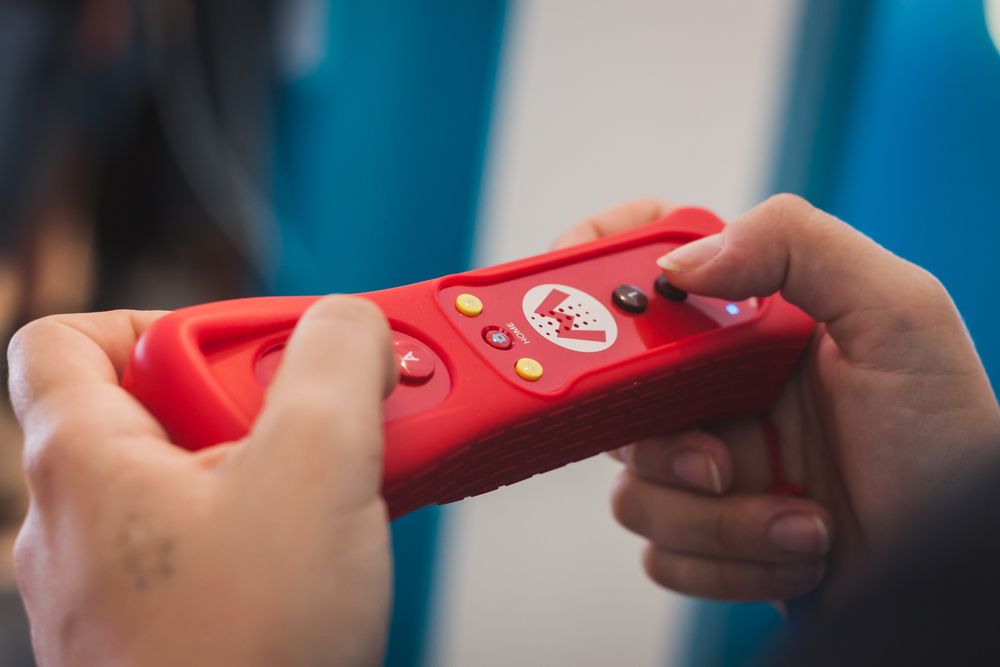Clinical Feasibility of the Nintendo Wii for Balance Training Post-Stroke: a Phase II Randomized Controlled Trial in an Inpatient Setting – A Critical Appraisal
Posted on 11th April 2016 by Amy Murray

Along with my love of video games and passion for technology, I have always believed that technology and new exciting methods of treatment should be involved with the ever-growing base of interventions available to us; that then as physiotherapists we deliver to our patients. Whether it be in a paediatric ward or within a care of the elderly setting, it would bring something new, fresh and exciting to therapy that patients have maybe not seen before. A small number of studies have already been completed in this area and have also looked at using other consoles in rehabilitation, however literature is limited.
After reading a recent article in Frontline magazine (Wright, J., 2015) regarding gaming and incorporating this into therapy to make it more fun, I felt as though this was the perfect subject for me to research further. The objective of this particular investigation was to investigate the feasibility and efficacy of the Nintendo Wii for balance rehabilitation post-stroke. I feel as though this aim is well justified as there is limited research for this area of practice.
What is Wii Fit Plus?
The Wii console, with use of a controller held in your hand, is a motion controlled games console which tracks your movements (Nintendo, 2011). Wii Fit Plus is also designed to work with the Wii balance board and controller, which measures your centre of gravity and tracks your movements by standing on the balance board’s two pressure pads. The Wii Fit Plus and balance board puts you through a series of games and yoga, to train you to manage your balance and centre of gravity more effectively. As you hold yoga poses, a small icon on the screen will tell you where your centre of gravity is, and allows you to adjust accordingly, training your proprioception (i.e. the body’s ability to sense movement within joints and joint position, enabling us to know where our limbs are in space without having to look).
Method
143 adults involved in inpatient rehabilitation, who had suffered from a non-cerebellar stroke and who were less than three months post-stoke were invited to take part in this trial. The number of participants was then narrowed down to a group of 30. Participants were randomly divided into two groups: Balance group (n=17) who used the Wii Fit Plus with the balance board in standing, and the upper limb group (n=13) who used Wii Sports/Snow Sports Resort in sitting. All participants had been blinded, however therapists had not. The sessions were supervised and consisted of 45 minutes – similar to that of the participants’ normal therapy schedule. Activities were chosen dependent on the participants’ upper limb function e.g. boxing and cycling for movement and archery and bowling for dexterity. For the balance group this included static exercises like yoga and more weight shifting activities such as ski slalom and stepping. The trial lasted over 4 weeks and participants were assessed at baseline and then at weeks 2 and 4.
The primary outcome measure of interest was feasibility, along with the clinical outcomes of Step Test and Functional Reach Test. Secondary outcomes measured were the Timed Up and Go, Wii Balance Board measures of static and dynamic balance, the Short Falls Efficacy Scale, the Upper Limb Motor Assessment scale and the STREAM.
What did they find?
All participants involved in the study reported enjoying the sessions and found them “as enjoyable as” or “more enjoyable” than their standard physiotherapy treatment, and most felt that they were beneficial. In both groups the primary outcomes were achieved, and most secondary outcomes improved either significantly or with a trend towards significance among both groups over time.
Article Review
The authors have undertaken a very interesting study which should have an impact on the post-stroke rehabilitation programme. I believe that this study provides the evidence that this concept would be feasible in everyday practice. Along with the variety of outcome measures used, the aim of the study was clearly set out and I feel the goals were achieved. I believe, however, that the study design should have been altered slightly. A control group of patients who received normal physiotherapy treatment should have been used as a comparison between groups. Future studies should consider this.
The sample size seems fairly small as the evidence gathered was only based on a small group of patients in one clinical setting – a larger group should be used in future which the author has made comment on. Also, 6 participants were discharged before the final assessment date, so results for these patients were not gathered – leaving only a small number to gather figures from, affecting the results. It also would have been useful for a balance outcome measure – like the Berg Balance Scale – to have been used, as this trial involved balance training, and I believe this scale is useful in measuring this.
Looking Forward
I feel as though more studies should be completed in this field as patients reported enjoying this therapy, felt as though it was more beneficial to them and improved their proprioception at the same time. I look forward to reading future studies regarding the feasibility and effectiveness of using the Wii Fit Plus, with regards to physiotherapy practice.
References
BOWER, K.J., CLARK, R.A., MCGINLEY, J.L., MARTIN, C.L., MILLER, J.K. 2014. Clinical feasibility of the Nintendo Wii for balance training post-stroke: a phase II randomized controlled trial in an inpatient setting. Clinical Rehabilitation. Vol 28, no. 9, pp. 912-923. Available from: http://cre.sagepub.com/content/28/9/912
NINTENDO. 2011. What is Wii Fit Plus? [online]. [viewed 3rd January 2016]. Available from: http://wiifit.com/what-is-wii-fit-plus/
WRIGHT, J. 2015. Virtual reality makes exercise fun. Frontline. November, vol. 21, no.19, pp. 18-19. Available from: http://www.csp.org.uk/frontline/article/physio-findings-virtual-reality-exercise-tens-benefits-pain-relief



